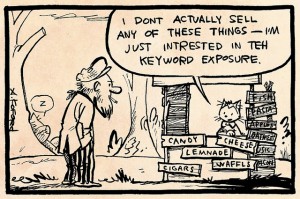Salami, especially homemade, is one of my favourite cold cuts. I enjoy eating this type of cured sausage for lunch every once in a while. Some people say the taste of salami is different depending on the thickness of the slices. Salami is also a word used to describe papers in which the authors present very little original content since these papers are mostly a duplication of work already published by the authors. These are called salami publications. Instead of presenting the complete story of the research they conducted in the first article they wrote, the authors may have withheld some details to be able to write a second, third, fourth paper, etc. on essentially the same topic, or the authors may publish multiple papers employing similar methodologies to answer similar research questions. The authors are salami slicing or diluting the presentation of their research work to obtain more publications out of it. Regardless of whether the slicing is thin or thick, this is an example of a dishonest authorship practice that the class discussed in “CHEE 687: Research Skills and Ethics.”
We also talked about other improper authorship practices, such as:
- manipulating data and/or images so that they look better but misrepresent what was found;
- stretching the truth about research progress;
- collecting or reporting data in a sloppy manner that leads to the presentation of inaccurate results;
- sharing others’ ideas or data that you learned about in a confidential setting;
- plagiarizing, whether including ideas or text from another’s work or your own previous work without properly citing it;
- publishing the same work in different journals;
- having another individual write the paper for you while you take credit for being the author; and
- listing individuals as co-authors of a paper solely due to their reputations or authoritative ranks, even though they did not make a significant contribution to the research.

Just as you would do on a witness stand in the courtroom, behaving ethically as an author means reporting “the truth [i.e., the real data], the whole truth [making no changes to the real data], and nothing but the truth [not including additional information that is not based on the real data].”
Scientific misconduct encompasses all of the improper authorship practices described above since it includes engaging in any activities that are dishonest or involve lying in the data collection and reporting stages, like fabricating and falsifying data or results. The consequences for misconduct can be disastrous to a person’s career (e.g., student expelled, researcher fired, funding lost).
This is the fourth in a series of weekly posts about topics relating to research skills and ethics. Stay tuned for the next post in the series, which will be about best practices for recording and storing laboratory data.
Image from the Laugh-Out-Loud Cats cartoon strip by Adam “Ape Lad” Koford (creative commons license)
